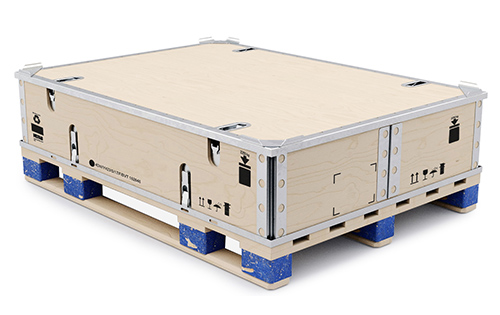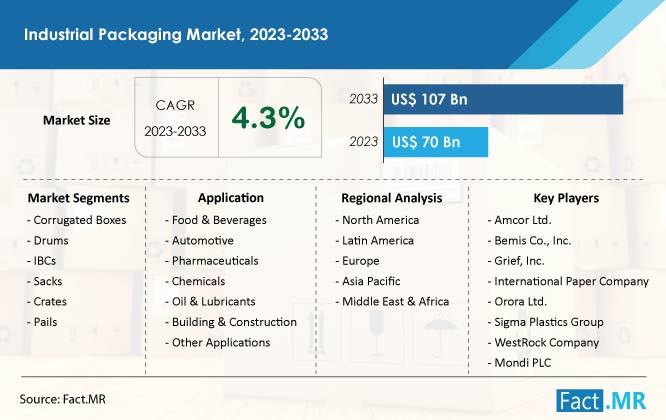Effective Industrial Recycling Solutions for Lasting Packaging: A Comprehensive Overview
In today's progressively environmentally-conscious world, the need for lasting packaging remedies has never been higher. To meet this demand, organizations throughout markets are actively looking for efficient industrial recycling remedies. Browsing the complex landscape of sustainable product packaging can be testing without a detailed overview. That's where this thorough overview on reliable commercial recycling remedies for sustainable product packaging is available in. By exploring essential locations such as packaging material option, designing for recyclability, implementing reusing framework, teaming up with reusing companions, and monitoring and determining reusing success, this guide will certainly equip you with the knowledge and tools needed to make educated decisions and drive positive adjustment within your organization. Whether you're a product packaging professional, sustainability supervisor, or merely curious about the subject, this guide will supply useful insights and methods to help you navigate the world of lasting packaging.
Packaging Material Option
The choice of packaging materials plays a critical role in ensuring the sustainability of industrial recycling remedies. When it pertains to lasting packaging, the option of products is key in decreasing environmental influence and taking full advantage of reusing efficiency. Selecting the ideal materials can help in reducing waste generation, conserve resources, and promote a round economic situation.
Products like cardboard, paper, glass, and specific kinds of plastics can be reused numerous times without shedding their quality. On the various other hand, materials that are tough to reuse, such as combined plastics or non-recyclable composites, can create challenges for the recycling procedure and may end up in incinerators or landfills.
An additional factor to consider is the use of eco-friendly and biodegradable products. Packaging made from renewable energies, such as plant-based plastics or biopolymers, can help in reducing dependency on fossil fuels and alleviate environment adjustment. Furthermore, biodegradable materials break down naturally with time, reducing the accumulation of waste in garbage dumps.
Additionally, the weight and quantity of packaging materials need to be decreased to reduce transport costs and energy usage. Light-weight materials not just call for fewer sources during production yet also add to reduce carbon exhausts during transportation.
Creating for Recyclability
Product packaging developers should prioritize the use of products that are widely approved for reusing and have actually established reusing infrastructures. Materials such as glass, aluminum, and certain types of plastic, like Animal and HDPE, are generally recycled and must be liked over materials that are hard or costly to reuse.
Another crucial consideration in creating for recyclability is the removal of unneeded elements or products. By lessening the number of layers, finishes, and added components, product packaging can be made simpler and less complicated to reuse. In addition, designers should aim to lower the use of mixed products, as they can make complex the reusing process.

Implementing Recycling Facilities
Effective application of reusing infrastructure is critical for the success of commercial reusing services. Without correct infrastructure in location, the reusing process ends up being ineffective and inefficient, preventing the total objective of lasting packaging.
To carry out reusing framework successfully, several essential variables need to be thought about. To start with, there should be a well-organized collection system that assists in the splitting up and collection of recyclable products. This can consist of designated recycling bins in public areas, in addition to collaborations with waste monitoring firms for curbside pick-up and sorting.
Once collected, the recyclable materials need to be carried to reusing centers in a prompt way. This calls for reliable logistics and transport networks, making certain that the products reach the proper centers immediately.
At the reusing centers, advanced sorting and processing technologies should be in area to divide various kinds of products successfully. This this link consists of the use of automated sorting devices, optical scanners, and manual sorting techniques.
Furthermore, there should be a durable market need for recycled products. This can be accomplished through collaborations with manufacturers and industries that make use of recycled products in their production processes. Creating a secure market for recycled products incentivizes the reusing market and promotes the round economic situation.
Teaming Up With Recycling Allies

One secret aspect of teaming up with recycling companions is the facility of clear communication networks. It is crucial to establish open lines of interaction to help with the exchange of details, updates, and comments. This allows both events to stay educated regarding the development of reusing efforts and address any type of challenges or concerns that may develop.
Additionally, cooperation can involve collaborations in applying and developing reusing programs. Recycling companions can offer beneficial insights and support in developing reliable collection systems and identifying one of the most suitable recycling modern technologies. By collaborating, businesses and recycling companions can optimize the recycling procedure and minimize waste.
Additionally, collaboration can prolong past the functional aspects of reusing. It can additionally include advocacy and education initiatives. By joining forces, businesses and recycling companions can raise understanding concerning the importance of recycling and promote the fostering of lasting product packaging practices among consumers and other stakeholders.
Monitoring and Measuring Recycling Success
To make certain the effectiveness of industrial recycling services and the accomplishment of lasting product packaging objectives, it is crucial for companies and their recycling partners to establish a detailed system for tracking and determining recycling success (industrial metal packaging). Tracking and measuring recycling success allows businesses to assess the impact of their recycling efforts, identify areas for improvement, and established purposeful targets for future development
One means to track reusing success is via the use of information collection and evaluation devices. By gathering information on the amount of packaging waste generated, the percent of waste that is reused, and the sorts of materials being recycled, businesses can gain beneficial understandings into their recycling efficiency. This information can then be evaluated to identify fads, patterns, and locations of ineffectiveness.
Another important facet of tracking and measuring reusing success is developing clear and standardized metrics. This enables businesses to contrast their efficiency against sector criteria and track their development over time. Metrics such as recycling prices, great site waste diversion prices, and greenhouse gas emissions can give a measurable step of a company's reusing success.

Final Thought
In final thought, executing effective industrial recycling services for sustainable packaging requires careful factor to consider of product packaging product choice, developing for recyclability, carrying out recycling facilities, collaborating with reusing companions, and tracking and measuring recycling success. By incorporating these methods, organizations can add to an extra sustainable and environmentally-friendly technique to product packaging, minimizing waste and advertising the circular economic situation.
By checking out vital areas such as product packaging product choice, making for recyclability, executing reusing infrastructure, working together with reusing partners, and tracking and gauging recycling success, this guide will certainly outfit you with the knowledge and devices essential to make informed choices and drive favorable change within your company. Product packaging designers ought to focus on the usage of products that are extensively accepted for reusing and have actually established recycling facilities.Cooperation with reusing partners is necessary for the effective implementation of industrial recycling remedies and the success of sustainable packaging goals. By joining pressures, organizations and reusing companions can raise awareness about the value of reusing and advertise the fostering of lasting product packaging techniques among consumers and other stakeholders.
By collecting data on the amount of packaging waste generated, the portion of waste that is recycled, and the types of materials being recycled, companies can acquire important insights into their recycling performance.